Delhi is indeed an enchanting place. The city has a storied past and an array of landmarks which showcase its rich history. Delhi depicts its culture via these landmarks. As a part of the Mughal Era, multiple landmarks including forts and mosques were built by the rulers. These mosques in Delhi are truly a form of the era’s evolution. With mesmerising architecture which tells stories, the Delhi mosques are not only places of worship but a true commitment. The landmarks highlight Delhi’s role in the past as an important destination and centre for Islamic Culture and worship.
10 Mosques In Delhi
These mosques in Delhi date back to the 12th Century when Delhi was an important centre for the establishment of the Delhi Sultanate. These historic landmarks indeed have a storied past.
1. Jama Masjid
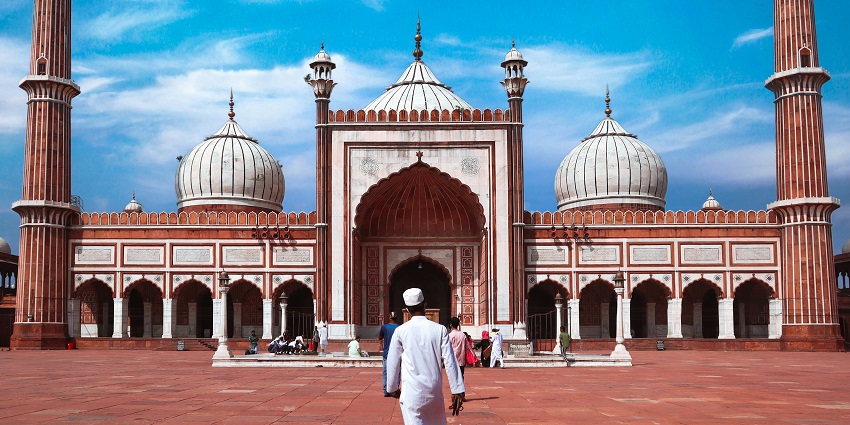
Jama Masjid is one of the biggest mosques in Delhi. The mosque was built under the guidance of the Mughal Emperor Shah Jahan between the years 1650-1656 AD. The monument is built with pure red sandstone with marble accents. On the premises of Jama Masjid, there are huge courtyards, minarets and domes. This mosque in Delhi is one of the largest mosques in India. It can accommodate worshippers up to 25,000. Jama Masjid’s proximity to nearby tourist attractions like the Red Fort, Chandni Chowk and Jama Masjid Market make it a convenient and chosen place to be explored.
Location: Jama Masjid, Chandni Chowk, Old Delhi, 110006
Highlights: Minarets, courtyards, paved floors
Suggested Read: Places To Visit In Chandni Chowk For A Quintessential Delhi Experience
2. Moti Masjid
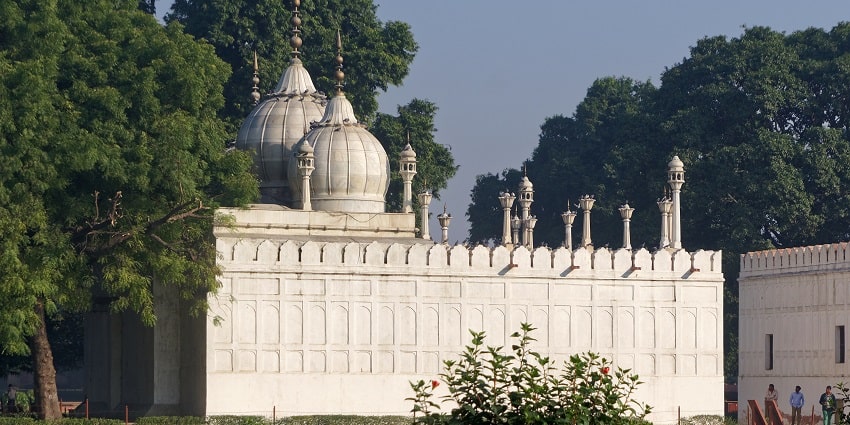
Photo: Jakub Hałun / Wikimedia Commons
Moti Masjid is located inside the premises of Red Fort itself. This mosque is one of the famous mosques in Delhi and is also known as the ‘Pearl Mosque’. It was built by Emperor Aurangzeb and is named for its white marble which was used in the construction. There are floral carvings on the mosque which adds beauty to it. The mosque withstands Mughal Architecture which is still being preserved. Moti Masjid falls under the ASI (Archaeological Survey Of India) and is currently inactive. The purpose of building this mosque was for the rulers to have a private praying area within the fort itself.
Location: Moti Masjid, Red Fort Complex, Chandni Chowk, Delhi, 110006
Highlights: White marble, Mughal architecture, calligraphy
3. Nizamuddin Markaz Mosque
Photo: Yasir Gürbüz / Pexels / Image For Representation Only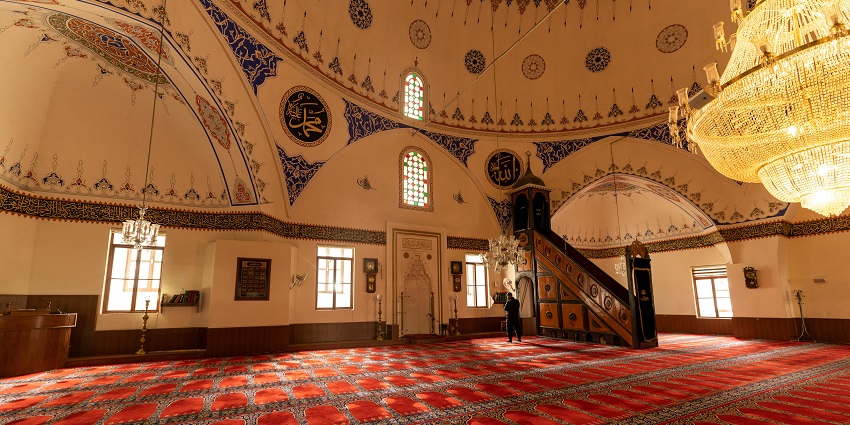
This mosque is locally known as Banglewali Mosque. The mosque is located in Nizamuddin West in South Delhi. It is believed that this place is the birthplace of Tablighi Jamaat. Presently, Nizamuddin Markaz Mosque continues to be the headquarters of the Nizamuddin Faction of Tablighi Jamaat. There are many guesthouses, gift shops and dining places surrounding the mosque. An average gathering at the mosque includes 2,000 to 4,000 people. The halls are used for communal prayers and gatherings. At night, the halls become a place for sleeping for 200 to 300 people.
Location: Nizamuddin Markaz Mosque, Nizamuddin West, New Delhi, 110013
Highlights: Historical area, Islamic architecture, Nizami Sufi tradition
Suggested Read: Top Places To Visit In Delhi For Every Type Of Traveller
4. Jamali Kamali Mosque And Tomb
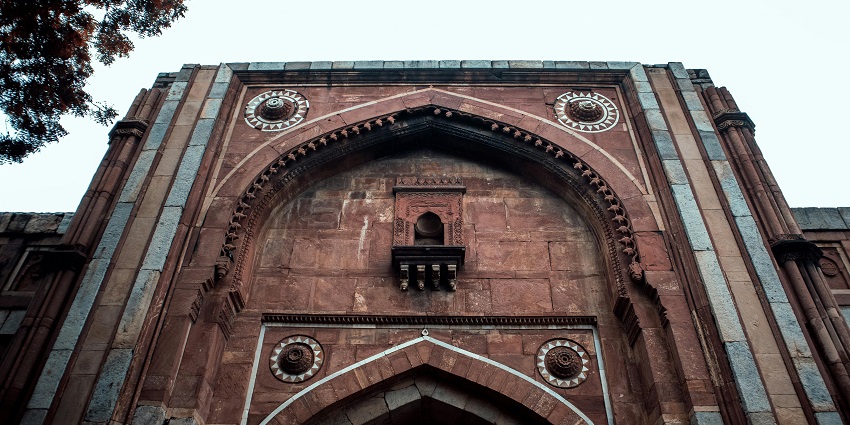
Photo: Tanmay Awasthi / Pexels
Jamali Kamali Mosque and Tomb lies in the archaeological park in Mehrauli. These are two monuments which are adjacent to each other, for this reason, they are named ‘Jamali Kamali.’ The mosque was built by Jamali, a Sufi Saint and Kamali who was a follower of Jamali. The mosque has Islamic Architectural Design and is constructed with red sandstone. The mosque has arches with only the central arch having a dome. There are marble embellishments in a few places too. The tomb has two marble graves of Jamali and Kamali. It is one of the popular mosques in Delhi.
Location: Jamali Kamali Mosque and Tomb, Mehrauli Archaeological Park, Mehrauli, New Delhi, 110030
Highlights: Tomb architecture, religious context of Jamali Kamali
5. Akbarabadi Mosque
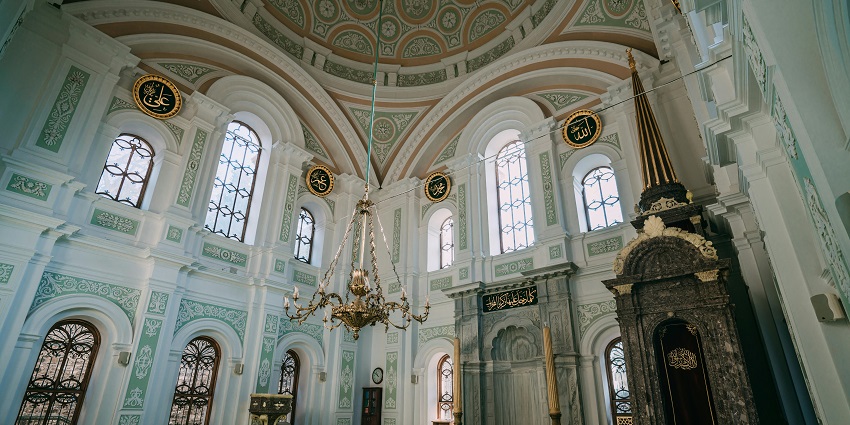
Photo: Sami TÜRK / Pexels / Image For Representation Only
Akbarabadi Mosque is one of the oldest mosques in Delhi. This mosque was built by Akbarabadi Mahal who was one of the wives of Shah Jahan. It is believed that the mosque was demolished by the British. It took two years to build the mosque. This place is of immense importance as Akbarabadi Mahal translated the Quran, the holy book of Muslims from Arabic to native Urdu at the premises of Akbarabadi Mosque. There are elegant arches and intricate designs. The mosque is in an inactive use and the artisans seem to have excellent craftsmanship.
Location: Akbarabadi Mosque, Sadar Bazaar, Near Fatehpuri Masjid, Chandni Chowk, Old Delhi, 110006
Highlights: Symmetrical courtyards, red sandstone, richly decorated Mihrab
Suggested Read: Popular Places To Visit Near Chandni Chowk
6. Begumpur Mosque
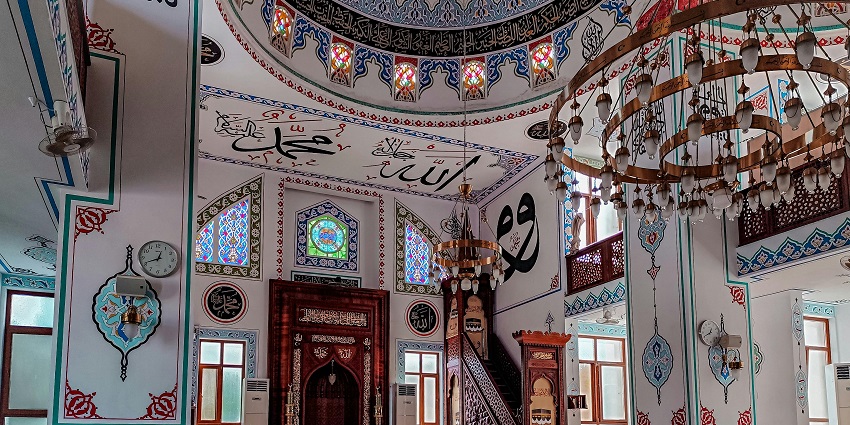
Photo: Mehmet Ayberk Erol / Pexels / Image For Representation Only
Begumpur Mosque is considered one of the oldest mosques in Delhi. The place was locally known as the Masjid Of Jahanpanah. The location of this mosque was previously the centre of the sultanate capital of the Tughlaq Dynasty. The mosque’s construction can be dated back to the 12th Century. Begumpur Mosque has an enormous size and was built during the reign of Mohammad Bin Tughlaq. This mosque is now under the supervision and protection of ASI (Archaeological Survey Of India). It still sees historians flocking to the place for more insights.
Location: Begumpur, New Delhi, 110017
Highlights: Large courtyards, elegant Arches, intricate inscriptions
7. Quwwatul – Islam Mosque
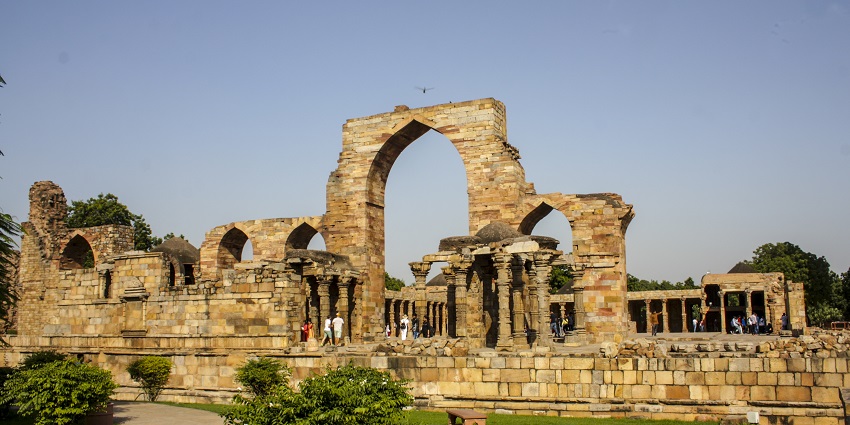
Photo: Indrajit Das / Wikimedia Commons
Quwwatul-Islam Mosque is located within the premises of the Qutub Minar Complex. Qutub Minar has been designated as a UNESCO World Heritage Site and Quwwatul-Islam Mosque falls under the supervision of ASI. The mosque is locally and historically known as Qutb Mosque or the Great Mosque Of Delhi. The mosque seems to have been commissioned by Qutb-ud-din Aibak. Presently in ruins, it still expects bustling crowds. Beautiful carvings can be seen on the stones and pillars of Quwwatul-Islam Mosque. It is believed that this mosque was built by demolishing twenty-seven Hindu temples and using their parts.
Location: Situated Within The Qutub Minar Complex In Delhi
Highlights: Indo-Islamic architecture, Hypostyle hall, large courtyards
Suggested Read: Places To Visit Near Delhi For The Weekend
8. Shia Jama Masjid
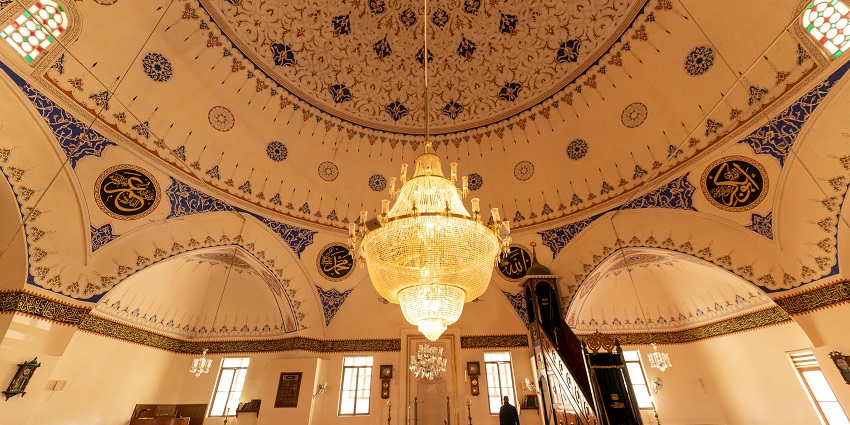
Photo: Yasir Gürbüz / Unsplash / Image For Representation Only
Shia Jama Masjid in Delhi is commissioned by the Shia Muslims and their community in Delhi. This mosque was built in the 17th Century. It strongly reflects the Mughal architectural styles and since then, this mosque has been an important centre for practising prayers for the Shia Muslim Community. You can find multiple minarets with beautiful decorative designs on them. The mosque is active and is used for both daily prayers and Friday congregational prayers. Located in the centre of Delhi, Shia Jama Masjid is easily accessible.
Location: Kashmiri Gate, Delhi, India
Highlights: Kashmiri Gate, Shia festivals, ornamental details
9. Moti Masjid Mehrauli
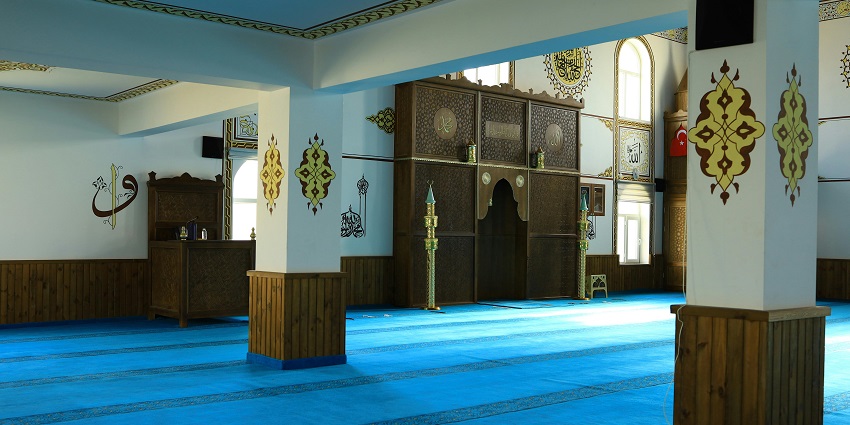
Photo: Aydın Photography / Pexels / Image For Representation Only
Visitors often confuse this place with Moti Masjid located in the Red Fort. This mosque is located in Mehrauli and is named after its appearance. Moti Masjid in Mehrauli was built during the reign of Bahadur Shah Zafar I. It is said that Moti Masjid was attacked despite being a protected place. The mosque’s marble minarets were torn out and smashed. There is a single-aisled prayer hall with five bays. There are enclosure walks on the surrounding of the Moti Masjid which are also made of marble. It is one of the best mosques in Delhi.
Location: Moti Masjid, Mehrauli, Delhi
Highlights: White marble, traditional Islamic art elements, religious gatherings
Suggested Read: Explore The Must-Visit Places In Old Delhi On Your Idyllic Delhi Tour
10. Fatehpuri Mosque
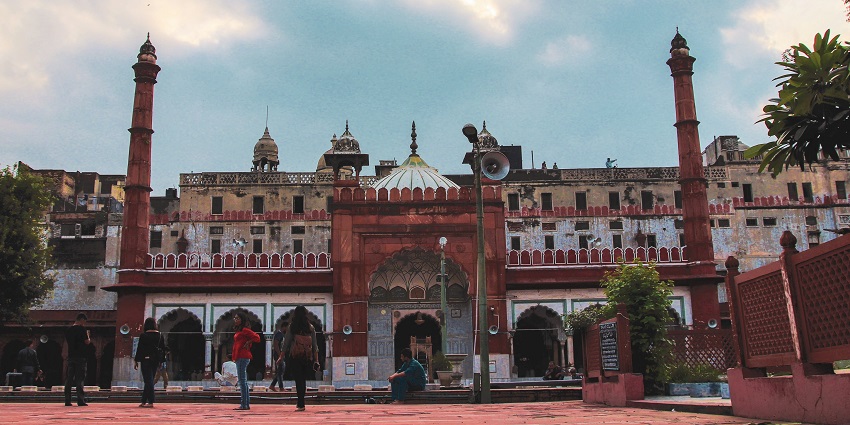
Photo: VasudhaBhati2013 / Wikimedia Commons
This mosque is one of the most beautiful mosques located in the area of Chandni Chowk in Old Delhi. Fatehpuri Mosque lies opposite to Chandni Chowk and is opposite to the Red Fort as well. The mosque was built by Fatehpuri Begum who was one of the Shah Jahan’s wives. She belonged to Fatehpur Sikri. Two of the Muslim festivals, Eid-ul-Fitr and Eid-ul-Zuha are prominently celebrated at this place. Fatehpuri Mosque has a huge courtyard accommodating several worshippers. The mosque is in active use and is a centre for Friday Communal Prayers and other religious gatherings.
Location: Fatehpuri, Chandni Chowk, Delhi
Highlights: Chandni Chowk, traditional Islamic art elements, religious gatherings
These notable mosques in Delhi represent the excellent craftsmanship of the rulers of the Mughal Empire. Every mosque in the city highlights the role of Delhi as the centre of all Islamic activities and culture during the Mughal Era. Book a trip to this city and witness the grandeur of these mosques with TripXL which promises the best times.
Cover Photo: Martijn Vonk / Unsplash


 WhatsApp
WhatsApp
 Twitter
Twitter









